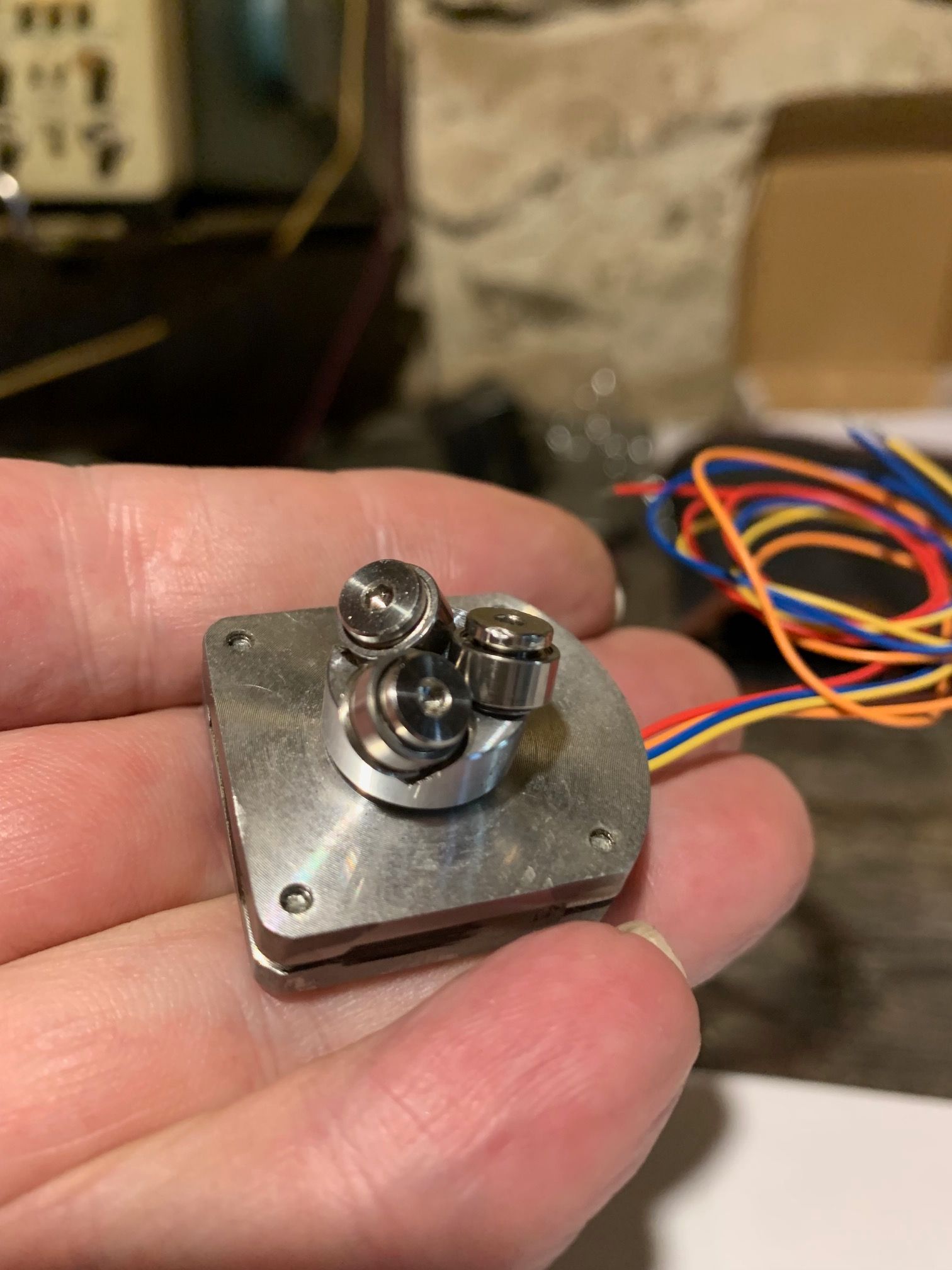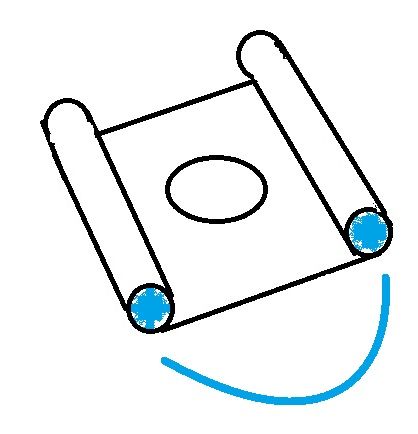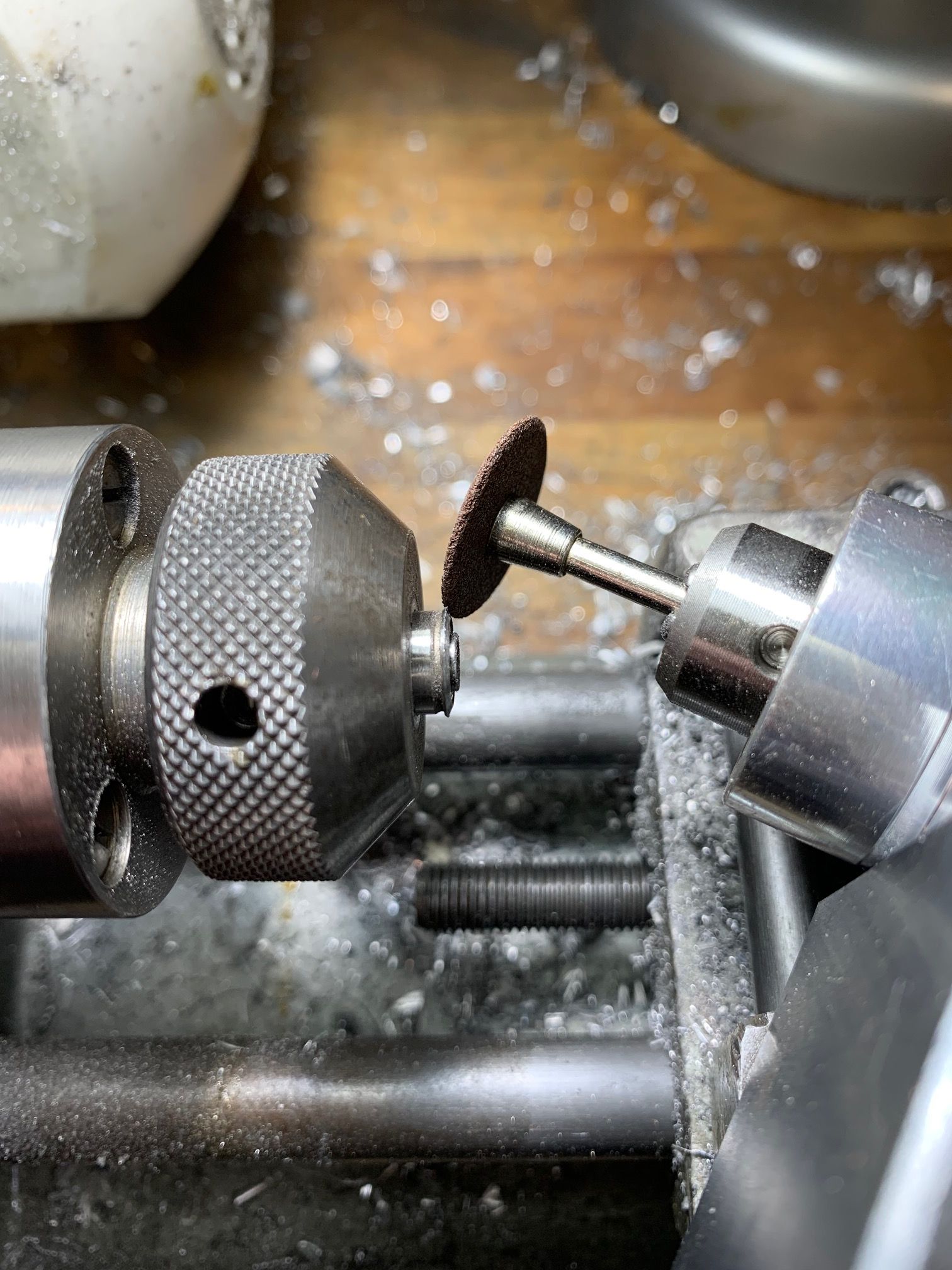rqthree here (known as Rip in real life). I'm the clown who started this whole VDE thing, and have been using mine for well over two years now.
A few items of potential interest:
-
I started with a "rolling screw" approach, based on a Rohlix linear actuator. It finally dawned on me that any tilted axis drive can have only one mathematically defined SINGLE point of intersection with the filament. Hence, the single knife blade.
-
I have found that my current NEMA 14 pancake stepper will stall and skip steps long before the drive knife starts to grind up the filament (at least PLA, PETG, and ABS). The push force on the filament at that point is about 1 kilogram (measured by pushing on a sensitive scale with the actual filament after it leaves the drive knife. For this reason I decided that multiple drive knives was a waste of material and weight. The motor quits before the filament does. This is also why testing this design by measuring the pull on the filament is not valid, as the filament tends to break at one of the knife cuts. This cannot happen in real life.
-
I see a lot of effort being made on making it easy to introduce ad remove the filament. I have never had an issue with this. To use new filament, I just cut the existing filament off at the motor, start the extruder, and push the new filament into the top of the motor. It just pushes the old filament out of the way (hot nozzle, of course). Both Tom and I independently arrived at a "motor clip" arrangement, so that the entire motor and drive assembly can be lifted off within seconds, effectively performing a "cold pull" on the filament if needed.
-
If you really want an easy feed, increase the cant angle of the knife edge and pressure rollers to 30 degrees. I use 15 degrees, and I believe Tom settled on 20. Increasing the angle to 30 degrees does several nice things:
a) it makes the filament feed faster per motor revolution
b) it makes the drive mechanism "back-driveable", so that the motor will spin if you push or pull on the filament. This makes loading or removing filament trivially easy.
c) it makes the mechanism subjectively feel "smoother". I can see no difference in print quality, and this is strictly a "feel" thing. -
For those trying multiple drive knives, good luck. I never had any success in getting the "multi-starts" impressed in the filament to co-operate during retraction. And I've never seen the need. Again, the motor skips before the filament does. The design philosophy behind the VDE was ease of build, simplicity, low weight, and extreme repeatability.
The best multi-drive approach I've tried has been two NEMA 11 pancakes, mounted back-to-back in a push-me-pull-you arrangement. The dual drive VDE weighs about 65 grams, and both motors are driven by the same signal with the coils reversed on the second motor so that it will spin the other way. -
The bearings I use are extended inner race Imperial units made of 440C stainless steel. This has a Rockwell hardness of about 60, which is darn hard. 52000 series steel is even harder. In any case, the drive knife on my current VDE has seen pretty hard use for over two years, and is still going strong. I have never tried carbon or glass filled filament, though.
It is pretty critical that the bearings be of high quality. I use ABEC 5 units, but see no need to spend over twice the price for ABEC 7. Note that ABEC standards just set limits on the manufacturing tolerances, and do NOT have anything to say about the radial or axial play of the bearing. That must be specified when the bearings are purchased, and increases the bearing price as each unit must be measured and selected.
One neat trick to effectively eliminated wobble in the bearings is to place 20 bearing balls of 0.026 inch diameter in the groove on the top shield of each bearing. The head of the shoulder screw effectively traps them in place, where they collectively act as a thrust bearing. 500 of these balls costs about $14, and are yet another reason I use Imperial bearings.
Have fun!





